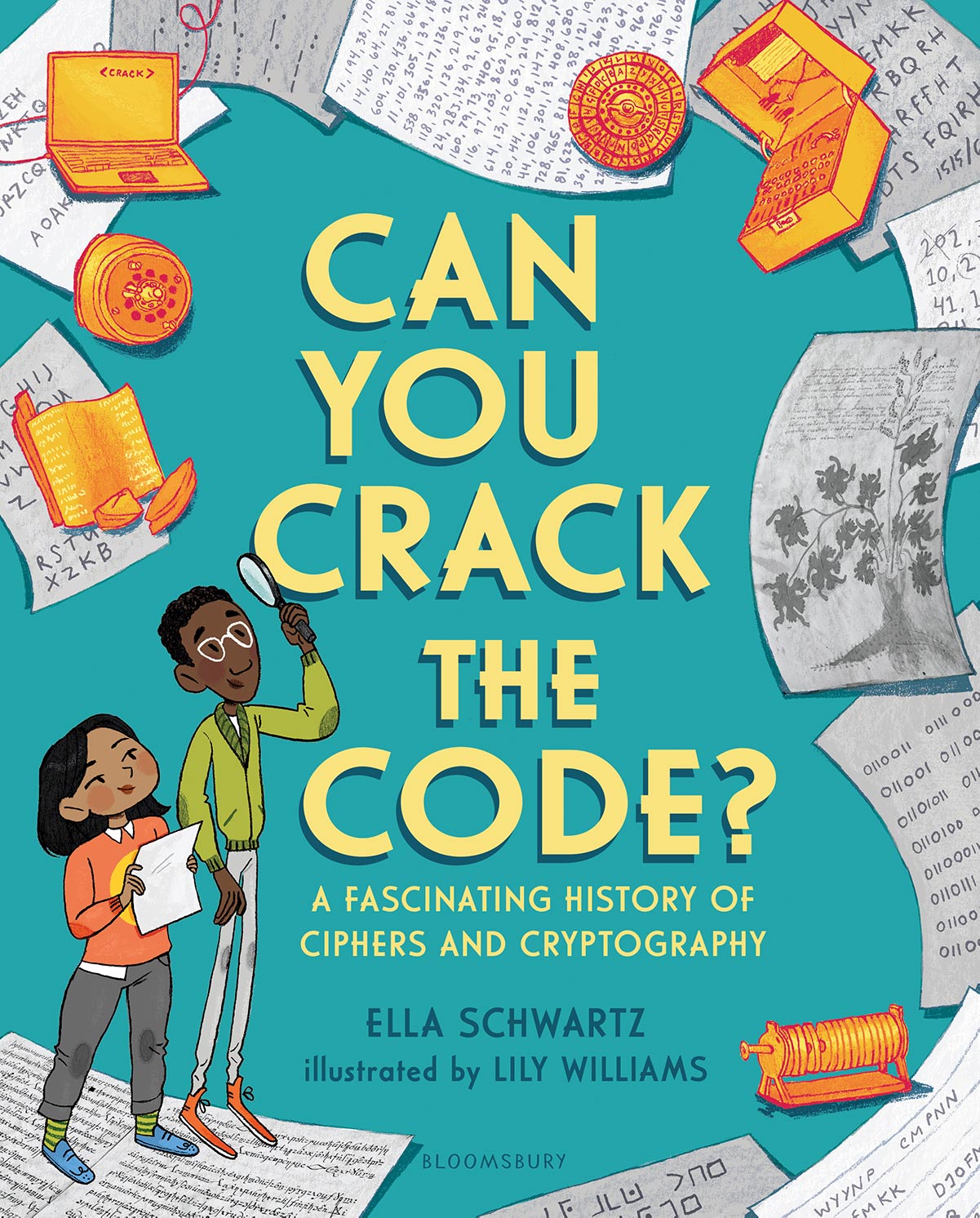Can You Crack the Code?
A Fascinating History of Ciphers and Cryptography
Codes can carry big secrets!
Throughout history, lots of good guys and lots of bad guys have used codes to keep their messages under wraps. This fun and flippable nonfiction features stories of hidden treasures, war-time maneuverings, and contemporary hacking as well as explaining the mechanics behind the codes in accessible and kid friendly forms.
Sidebars call out activities that invite the reader to try their own hand at cracking and crafting their own secret messages.
This is the launch of an exciting new series that invites readers into a STEM topic through compelling historical anecdotes, scientific backup, and DIY projects.
Bloomsbury - March 26, 2019
ISBN: 1681195143

A broad and lucid survey of cryptographic strategies. These range from steganography and substitution ciphers to second factor authentication and other recent trends in cybersecurity. She also provides plenty of variously coded examples for readers to decipher as practice, capped by a final challenge to go back and find the clues to a secret message that have been distributed throughout. Her detailed description of how the German Enigma machine worked (and was hacked by the Bletchley Park group in World War II) is indeed “fascinating,” as are the close analyses of still-unsolved messages such as the modern Kryptos inscription outside CIA headquarters.
This perennially popular topic leads kids into tales of war and espionage, and to better ways of passing messages in class. Here Schwartz discusses the frequently traveled paths of the Caesar code, Masonic symbols, and the Enigma machine, with lots of opportunity to try one’s hand at en- and decryption, and she also explains how encryption is vital to internet security and touches all forms of online and cellular communication. Necessary math concepts used to strengthen passwords are smoothly addressed (and some teachers might be interested in Schwartz’s discussion of the practical use of prime numbers), along with such delectable tidbits as an illegal prime number that can unlock DVD encryption. Cartoon illustrations keep things cheery, as does Schwartz’s overall optimism concerning cybersecurity and the white hat hacking. For middle-graders interested in the interplay of encryption and their personal security...
